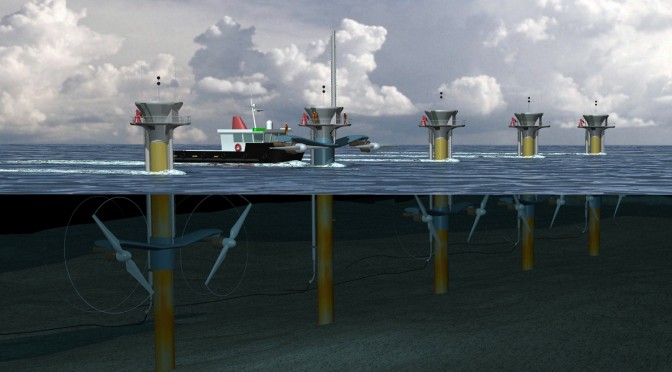Today, Energy Secretary Steven Chu recognized the nation’s first commercial, grid-connected tidal energy project off the coast of Eastport, Maine. Leveraging a $10 million investment from the Energy Department, Ocean Renewable Power Company (ORPC) will deploy its first commercial tidal energy device into Cobscook Bay this summer. The project, which injected $14 million into the local economy and has supported more than 100 local and supply chain jobs, represents the first tidal energy project in the United States with long-term contracts to sell electricity – helping to drive American leadership in this innovative clean energy technology and diversify the nation’s energy mix.
“Developing America’s vast renewable energy resources is an important part of President Obama’s all-of-the-above energy strategy to create jobs and strengthen U.S. global competitiveness,” said Energy Secretary Steven Chu. “The Eastport tidal energy project represents a critical investment to ensure America leads in this fast-growing global industry, helping to create new manufacturing, construction, and operation jobs across the country while diversifying our energy portfolio and reducing pollution.”
Tidal energy is a clean, renewable resource that can be harnessed wherever changing tides move a significant volume of water – including off the coasts of many U.S. cities where there is high electricity demand. Near Maine, the Bay of Fundy is one of the most robust tidal energy resources in the world. Each day, 100 billion tons of water flow in and out of the bay with the force of 8,000 locomotives and tidal ranges of up to 50 feet. Tides can also be forecast accurately, making tidal energy one of the most reliable and predictable renewable resources available.
“Maine is well positioned to lead the nation in tidal energy development. The Cobscook Bay Tidal Energy Project is one example of the type of actions we need on a national scale to stabilize energy, prevent energy shortages, and achieve national energy independence. Continued investment and innovation in clean energy technologies are integral to advancing these goals,” said U.S. Senator Susan Collins. “I have worked hard to secure federal funding to support marine and hydrokinetic technology designed to deliver clean, reliable electricity to Maine consumers, and I am thrilled that the first commercial, grid-connected ocean energy project in the United States is being installed here in Maine.”
Initially, ORPC’s Cobscook Bay pilot project will provide enough clean, renewable electricity to power between 75 and 100 homes. In addition to this Energy Department-supported pilot, ORPC plans expand its Maine project and install additional tidal energy devices to power more than 1,000 Maine homes and businesses.
In April, the Maine Public Utilities Commission approved primary contract terms for 20-year power purchase agreements (PPAs) for the project, marking the first long-term tidal energy PPAs in the United States. The Commission’s order directs the three Maine investor-owned utilities — Central Maine Power Company, Bangor Hydro Electric and Maine Public Service Company — to negotiate these agreements with ORPC, helping to attract additional private investment as the project matures.
Through the Energy Department’s early investment, ORPC has brought its tidal energy device from the laboratory to commercial deployment. The tidal energy devices, as well as many of the components, are being manufactured in the United States, strengthening American manufacturing competitiveness in this emerging global industry. Additionally, technical experts from the Department’s Sandia National Laboratories in New Mexico and National Renewable Energy Laboratory in Colorado collaborated with ORPC to conduct open water testing, refine designs and improve device performance.
Earlier this year, the Energy Department released a nationwide tidal energy resource assessment, identifying about 250 terawatt hours of annual electric generation potential from tidal currents. Tidal power represents a major opportunity for new water power development in the U.S., especially along the East Coast as well as in Alaska and Hawaii. This energy potential could significantly contribute to the United States’ total annual electricity production, further diversifying the nation’s energy portfolio and providing clean, renewable energy to coastal cities and communities.
For more information on tidal energy in the United States visit the Energy Department’s Water Power Program website.


